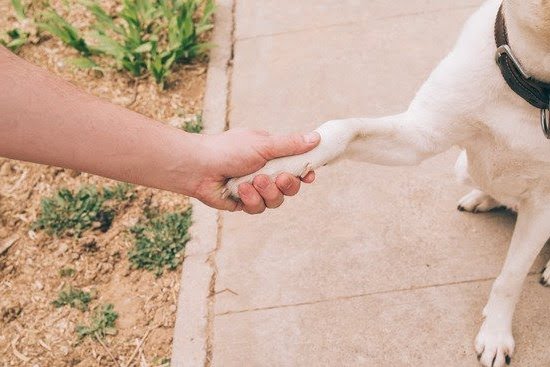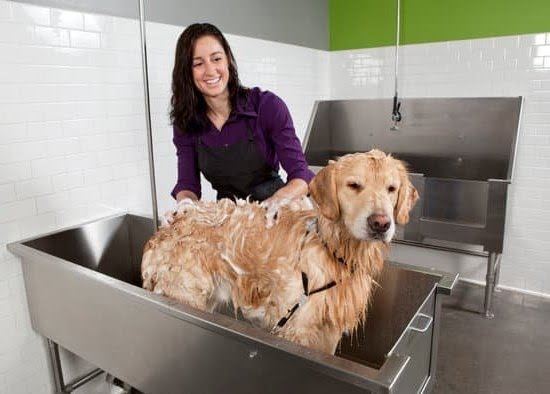Can dogs be trained to use a toilet? The idea of toilet training dogs may seem like a far-fetched concept, but it is actually possible.
Through the years, humans have trained dogs to perform various tasks, and toilet training is just one of them. This article will explore the history of dog training, the benefits of toilet training for dogs, understanding the feasibility of this training method, a step-by-step guide, common challenges and solutions, the difference between toilet training and potty training for dogs, the best tools and products for this type of training, and real-life success stories.
Dog training has been around for centuries. From being hunters’ faithful companions to serving as therapy animals and service dogs, canines have been taught to perform a wide range of tasks.
With advancements in animal behavior research and positive reinforcement-based methods, today’s dog trainers have more tools at their disposal than ever before. Canine intelligence has been proven time and again through acts such as guiding visually impaired individuals or detecting cancer cells in a person’s body – making it entirely viable that they could be trained to use a bathroom apparatus.
As pet owners strive to provide the best care for their furry friends, there is growing interest in teaching dogs to use the toilet as opposed to relieving themselves outside or on traditional pee pads. Not only does this offer convenience for dog owners who might not have easy access to outdoor spaces but it also helps maintain cleanliness within the home.
Additionally, having a dog that can consistently use the toilet can be beneficial for individuals with mobility limitations or those living in high-rise apartments without immediate access to open areas for their pets. In this section we elaborate further on these benefits while considering whether or not this is an ideal option for your pet.
The Benefits of Toilet Training for Dogs
Toilet training for dogs may seem like a groundbreaking idea, but in reality, it has been a practice for quite some time. The benefits of toilet training for dogs are numerous and can significantly improve the relationship between pet and owner. One of the main advantages is the convenience it brings to both the dog and the owner.
With a toilet-trained dog, there’s no need to take them outside in inclement weather or during the middle of the night. This can be particularly helpful for elderly or disabled dog owners who may have difficulty taking their pets out regularly.
Aside from convenience, toilet training also promotes cleanliness in the home. No more dealing with accidents on the carpet or having to clean up after your furry friend. Additionally, by teaching your dog to use a toilet, you’re also reducing their environmental impact. Traditional methods of disposing of dog waste contribute to pollution, but by having your dog use a toilet, you can reduce this impact.
Moreover, toilet training can be a great mental stimulation for your dog. It taps into their natural problem-solving instincts and provides them with an opportunity to learn a new skill. This mental exercise can help keep your dog engaged and prevent boredom or destructive behavior that may result from lack of stimulation. Overall, toilet training offers many benefits that not only make life easier for the owner but also improve the well-being and happiness of the dog.
Understanding the Feasibility of Toilet Training for Dogs
When it comes to training dogs, some people wonder if it’s possible to train them to use a toilet. While it may seem like a far-fetched idea, the reality is that yes, dogs can be trained to use a toilet. This method of potty training has gained popularity in recent years, with many dog owners opting for this convenient and hygienic option.
To understand the feasibility of toilet training for dogs, it’s important to consider the breed, age, and temperament of the dog. Some breeds may be more receptive to this type of training than others, and young puppies tend to adapt more easily compared to older dogs. Additionally, a dog’s personality and willingness to learn new behaviors will also play a role in the success of toilet training.
Step-by-step Guide:
- Introduce the dog to the toilet: Start by getting your dog familiar with the toilet. Let them sniff around and get comfortable with its presence.
- Use positive reinforcement: When your dog shows interest in the toilet or makes any attempt to interact with it positively reinforce their behavior with treats or praise.
- Gradual transition: Slowly transition from using puppy pads or outdoor potty areas to using the toilet. You can do this by gradually moving the pad closer to the bathroom until your dog becomes accustomed to using the toilet for their potty needs.
It’s essential to approach toilet training with patience and consistency as every dog is different. However, through positive reinforcement and a gradual approach, many dogs have successfully been trained to use a toilet.
Step-by-Step Guide to Toilet Training Your Dog
Toilet training your dog is not an easy task, but with patience and consistency, it is definitely achievable. Here is a step-by-step guide to help you through the process:
1. Start with a designated spot: Choose a specific area in your bathroom where you want your dog to do his business. Whether it’s on a special doggy toilet seat or directly in the toilet bowl, consistency is key.
2. Introduce the concept: Begin by getting your dog comfortable with the toilet and the surrounding area. Let him sniff around and investigate. You can even give him treats or praise when he shows interest in the toilet.
3. Use positive reinforcement: When your dog does his business in the designated spot, reward him immediately with treats or verbal praise. This will help him associate using the toilet with something positive.
4. Gradually make the transition: Once your dog is comfortable using the designated spot, start moving him closer to actually using the toilet itself. You can use a stool or step to help him reach comfortably.
5. Slowly remove other options: As your dog gets used to using the toilet, gradually remove other options like pee pads or outdoor potty breaks. This will reinforce that using the toilet is now his primary bathroom spot.
Remember that every dog is different and it may take some time for them to fully grasp this concept, so have patience.
Common Challenges and Solutions in Toilet Training
Toilet training a dog comes with its own set of challenges, but with the right approach and patience, these challenges can be easily overcome. One common challenge in toilet training dogs is their reluctance to use the designated spot. Dogs are creatures of habit, and breaking their existing bathroom habits can take time and persistence. Additionally, some dogs may not understand the purpose of the designated area, leading to accidents elsewhere in the house.
One solution to this challenge is to use positive reinforcement. Reward your dog with treats or praise whenever they use the designated toilet spot. This will help them associate that specific area with a positive outcome, making them more likely to use it in the future. Consistency is also key; take your dog to the designated spot at regular intervals, especially after meals and playtime.
Another common challenge in toilet training dogs is their inability to communicate when they need to go. Unlike humans, dogs can’t simply tell you when they need to relieve themselves. This often leads to accidents inside the house, especially during the initial stages of toilet training.
One solution to this challenge is to pay close attention to your dog’s behavior and body language. They may start sniffing around or circling a certain area when they need to go. By picking up on these cues, you can quickly redirect them to the designated toilet spot before any accidents occur.
| Common Challenges | Solutions |
|---|---|
| Reluctance to use designated spot | Use positive reinforcement and consistency in taking your dog to the spot regularly |
| Inability to communicate when they need to go | Paying attention to body language and behavior cues |
The Difference Between Toilet Training and Potty Training for Dogs
When it comes to teaching dogs how to relieve themselves, there is often confusion between toilet training and potty training. While both terms may seem interchangeable, they actually have different meanings and techniques associated with them.
Toilet Training
Toilet training refers to the process of teaching a dog to use a human toilet for urination and defecation. This requires the dog to learn how to balance on the seat and effectively eliminate waste into the toilet bowl. The goal of toilet training is for the dog to completely bypass the use of traditional outdoor or indoor methods for relieving themselves and instead use a human toilet exclusively.
Potty Training
On the other hand, potty training focuses on teaching a dog where it is appropriate to relieve itself, whether it be outdoors in a designated area or indoors on a specific type of mat or pad. Potty training does not involve teaching a dog to use a human toilet, but rather establishing good habits for eliminating waste in designated areas.
While both toilet training and potty training aim to teach dogs appropriate bathroom behavior, they differ in their ultimate goals and methods used.
In this section, we will explore the unique approaches and considerations involved in both types of training and provide insight into which method may be more suitable for your dog’s needs. Additionally, we will discuss how understanding these differences can impact your decision when considering whether or not dogs can be trained to use a toilet.
The Best Tools and Products for Toilet Training Your Dog
Toilet training a dog can be a challenging task, but using the right tools and products can make the process much easier. One of the most essential tools for toilet training your dog is a doggy toilet seat.
This specially designed seat fits on top of your regular toilet seat and provides a stable platform for your dog to use. Doggy toilet seats come in various sizes to accommodate different breeds, and some even come with a step-up feature to help smaller dogs reach the seat more easily.
In addition to a doggy toilet seat, you may also want to invest in some attractant sprays or drops specifically formulated to encourage dogs to use the toilet. These products contain natural pheromones that mimic those found in a dog’s urine, which can help entice your furry friend to do their business in the right place.
Another useful tool for toilet training is a flushable dog waste bag. These biodegradable bags allow you to easily dispose of your dog’s waste down the toilet, minimizing mess and odor in your home.
For dogs who are smaller or have mobility issues, there are also artificial grass potty pads available that are designed to simulate the look and feel of real grass. These pads can be placed directly on the floor or in a designated area and provide a comfortable and familiar surface for your dog to use. Some even come with built-in drainage systems to prevent mess and make cleaning up easier.
Overall, choosing the right tools and products for toilet training your dog can make the process more successful and less stressful for both you and your furry companion.
| Tool/Product | Description |
|---|---|
| Doggy Toilet Seat | Specially designed seat that fits on top of regular toilet seat for dogs to use |
| Attractant Sprays/Drops | Contains natural pheromones to encourage dogs to use the toilet |
| Flushable Dog Waste Bag | Biodegradable bags for easy disposal of dog waste down the toilet |
Success Stories
Success Stories of Toilet-Trained Dogs
There are numerous success stories of dogs being successfully toilet trained to use a human toilet. One such story is that of Lucy, a Labrador Retriever, who was trained by her owner to use the toilet after several failed attempts with traditional potty training methods. With patience and consistency, Lucy eventually learned to signal when she needed to relieve herself and would then do so on the toilet.
Another success story is that of Max, a Shih Tzu mix, whose owner used a combination of positive reinforcement and clicker training to teach him how to use the toilet. Max’s owner started by gradually moving his indoor potty closer to the bathroom until finally placing it directly over the toilet. After some time, Max began associating the bathroom with relieving himself and soon transitioned to using the toilet itself.
Tips From Successful Dog Owners
In addition to these success stories, there are countless other dog owners who have successfully trained their pets to use a toilet. Many of them credit their success to consistency, patience, and positive reinforcement. It’s important for dog owners to keep in mind that every dog is different, so what works for one may not work for another. However, with dedication and persistence, many dogs
If you’re considering toilet training your dog, it may be helpful to seek advice from those who have already gone through the process. Asking for tips and guidance from successful dog owners
The Impact of Success Stories on Toilet Training
Success stories of dogs using a toilet serve as inspiration for other pet owners who may be considering this method of potty training. These real-life examples demonstrate that it is indeed possible for dogs
Conclusion
In conclusion, toilet training can be a viable option for dog owners who are looking for a convenient and potentially eco-friendly alternative to traditional potty training methods. While it may not be suitable for every dog, many canines have successfully been trained to use a toilet with the right guidance and patience from their owners.
The benefits of toilet training, such as reducing indoor accidents and minimizing the need for outdoor bathroom breaks, make it an appealing option for many pet owners.
It is important to consider your individual dog’s temperament, age, and breed when deciding whether toilet training is the right choice. Additionally, understanding the feasibility of toilet training and being prepared for common challenges will be crucial in determining if this method is suitable for your furry friend.
Ultimately, while some dogs may excel at using a toilet with proper training and reinforcement, others may struggle to adapt. It is essential to weigh the potential benefits against the realistic expectations for your specific dog before embarking on the toilet training journey. With dedication and consistency, however, many dogs can be successfully trained to use a toilet, providing both convenience and practicality for pet owners.

Welcome to the blog! I am a professional dog trainer and have been working with dogs for many years. In this blog, I will be discussing various topics related to dog training, including tips, tricks, and advice. I hope you find this information helpful and informative. Thanks for reading!





